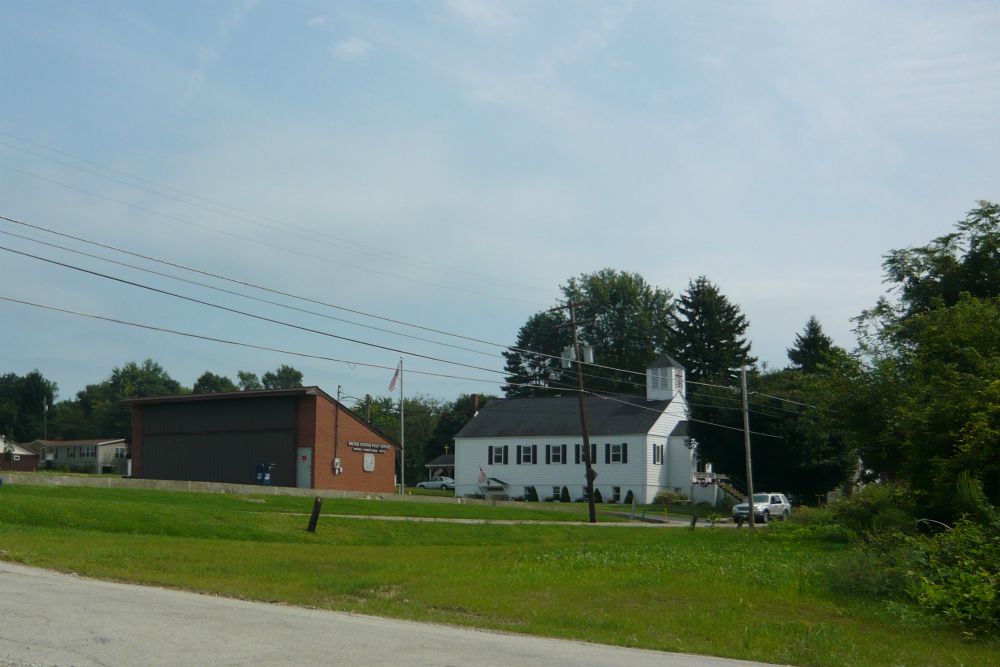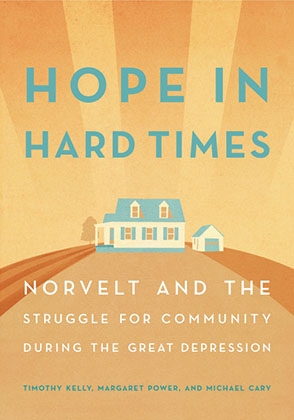
A view of Norvelt, Pennsylvania, in 2011 (Wikimedia Commons/Canadian 2006)
In his 1996 State of the Union Address, President Bill Clinton declared, "The era of big government is over. But we cannot go back to the time when our citizens were left to fend for themselves." That most people remember only Clinton's first sentence reflects the intensifying anti-government sentiment that climaxed with the election of Donald Trump and a conservative Republican congressional majority.
However, because many Americans still lack adequate wages, housing or health care, Clinton's second sentence can't be ignored. Recently, the coordinated efforts of FEMA and caring citizens to aid in disaster relief has shown that, especially during catastrophes, government agencies can help people triumph over seemingly insurmountable odds.
But can federal intervention solve chronic social problems like poverty? The authors of Hope in Hard Times invite us to consider what an activist government can accomplish when it pursues bold, improbable endeavors.
This thoroughly researched and richly detailed study narrates the triumphs and challenges faced by the administrators and residents of Norvelt, one of 34 subsistence housing communities created by Franklin Roosevelt's New Deal for unemployed miners and others left homeless and destitute by the Great Depression. Located in the coal country of southwestern Pennsylvania, the still-thriving Norvelt remains one of the most "innovative and humane" responses to the suffering brought about by the Depression and offers "tangible proof" that government intervention can lift people out of misery.

A heroic federal effort was demanded to alleviate the abysmal plight of coal miners. Historians Timothy Kelly, Margaret Power and Michael Cary recount the deplorable working and living conditions of miners and coke workers in the employ of barons like Henry Clay Frick. Forced to live in poorly constructed homes that lacked indoor plumbing or furnaces, families of miners were vulnerable to malnutrition and illness, especially during the Depression.
Driven to homelessness, some coal workers had to find shelter in the ovens they formerly stoked. These workers received little more than food aid from the conservative Hoover administration, which saw social welfare programs as pathways to laziness and communism.
To provide security and dignity to those ravaged by poverty, the Roosevelts believed that federal aid could succeed where Hoover's tax breaks and bank bailouts failed. To Eleanor Roosevelt, fair wages and good housing — including indoor plumbing and furnaces — were basic human rights, as was access to quality health care for children.
Because of her devoted, energetic commitment to the subsistence housing program, the residents of Norvelt voted to construct their town's name, originally Westmoreland Homesteads, from the last syllables of her first and last name.
To carry out Eleanor Roosevelt's vision, the architects of the subsistence housing program applied the Quaker ethos of cooperative effort and community interaction, which they attempted to instill in the carefully selected residents. Though residents became involved in various cooperative endeavors, including a group health care plan, they generally preferred the "middle path" between cooperation and individualism, engaging with fellow residents when concerted action was most effective, but exercising their democratic rights when group efforts conflicted with their preference.
The self-interest of some residents threatened the cooperative ideal of the architects, and the need for revenue demanded that the town lure a for-profit garment factory, but government loans subsidized the factory, and the factory employed union labor. Indeed, Norvelt's mediation between competitive and cooperative models was emblematic of middle-class life in late-20th-century America.
Though Hope in Hard Times convincingly demonstrates the success of the Norvelt experiment in bringing self-esteem, stability and opportunity to destitute families, it also lays bare the fears of difference that can undermine the communitarian ideals of projects like Norvelt. It was, and remains, a profoundly white, heteronormative town.
Advertisement
Though Norvelt elevated the status of the white male heads of households, women's secondary roles as wives, mothers and daughters did not change. However, improved household amenities freed women's time to participate in various community endeavors, including a newspaper, in which they were able to take on executive roles. Also, Norvelt women composed a significant number of the workers at the garment factory.
On the other hand, people of color factor in Norvelt only because of their exclusion. At first, Norvelt was segregated to win the support of skeptical Southern legislators; later, Norvelt residents voted to keep African-Americans out (though one black family was admitted following pressure from the Roosevelts).
The authors brilliantly demonstrate how this exclusivity led to present-day Norvelt's right-wing politics and white supremacist attitudes. In matters of race and gender, Norvelt proves again to be a typical middle-class American town.
Despite its recognition of sobering realities, Hope in Hard Times is, as its title suggests, an optimistic book. Though it provides sufficient statistics and research reviews to satisfy the scholar, general readers will enjoy the intimacy the authors create through their vivid descriptions of the interiors of homes and the testimony provided by current residents, many of whom are descendants of the original settlers.
The pride of the current residents indicates the success of the Norvelt experiment, but it also bolsters the claim that, far from fostering an indolent, demoralized society, federal intervention, in collaboration with willing citizens, can inspire diligence, dignity and community solidarity.
[Dennis McDaniel is associate professor and chair of the English department at St. Vincent College in Latrobe, Pennsylvania.]




